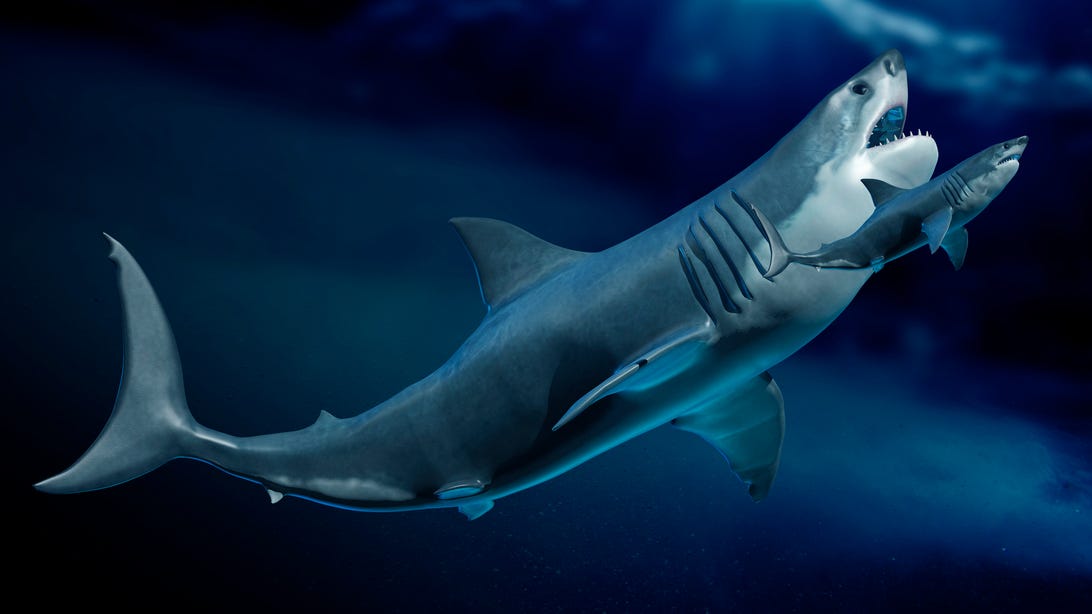
Was megalodon just a gigantic version of a Great White that stalked the ocean some four million years ago?
Science Photo Library/GettyOne of the largest sharks to ever stalk the world’s oceans, megalodon, is often depicted as a gigantic great white shark; an oversized version of one of today’s top predators. But scientists only know of the meg, which lived some 3.6 million years ago, thanks to fossil teeth and some vertebrae. So did it really look like the fearsome great white?
Hollywood certainly thinks so (with a few creative liberties, of course)! However, a new study argues we basically have no idea what the megalodon looked like.
“This study may appear to be a step backward in science,” said Kenshu Shimada, a paleobiologist at DePaul University and co-author on the paper, in a press release. “But the continued mystery makes paleontology, the study of prehistoric life, a fascinating and exciting scientific field.”
The research, which appears in the journal Historical Biology on Feb. 6, reassessed a previous study that argued the body shape of the megalodon might be related to the way it regulates body heat. Megalodons belong to an order of sharks known as the lamniformes and it was believed to be partially warm-blooded. The old study argued we could reliably make a case about the meg’s physiology by comparing this with modern day warm-blooded sharks. The new study argues that premise is invalid.
The researchers write that whether a shark is warm-blooded or cold-blooded doesn’t have much bearing on its body shape, at least when you look at it two-dimensionally.
Scientists can make inferences about the size of megalodon based on fossil teeth, comparing the ancient chompers with other members in the meg’s shark family. Some of these estimates suggest megalodon grew to almost 60 feet in length, about three times bigger than a great white. Unfortunately, that’s about as far as we can go.
“Any meaningful discussion about the body form of O. megalodon would require the discovery of at least one complete, or nearly complete, skeleton of the species in the fossil record,” said James Wood, a graduate student at DePaul and co-author of the study, in a press release.
Of course, all of this science can’t get in the way of a good Hollywood script, can it? Jason Statham is set to fight another great white-like Meg in the Meg 2, according to a recent report by Variety.


